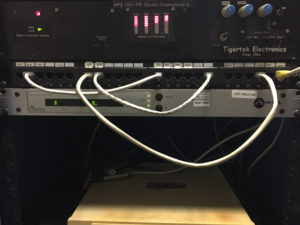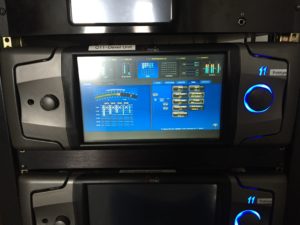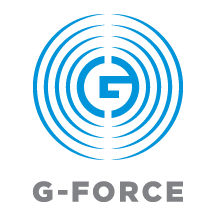Introduction (Part 1)
I’ve always loved the sound of processed audio. I’m a big fan of it! The only thing that I do not like about processing audio is hearing the audio processor work. My life goal when developing audio processing is to create well managed audio, but I don’t want to hear the audio processor working to make the effect happen!
The serious pursuit of this goal started late in 1987 when development of my first multiband audio processor began. A short series of multiband designs were developed, all leading to The Audio Chameleon audio processor (APS-1000), which debut around 1990.
This is an off-air audio cassette sourced clip of the early version of the FM Audio Chameleon. This clip features the young version of me as the DJ on my “pirate” FM station. This clip is from around 1991:
There were several versions of the Audio Chameleon produced between 1990 and the last one in 2005. The 2005 model (which still exists) was the last to feature CMOS “hard coded” logic.

I knew the next step would be in the digital domain, where I can just make use of the computers built into the hardware. Why? Because it was obvious to me that the answer to invisible control was more intelligence.
The Omnia.11 version 1.x series processor (which I now nick name as Omnia.11 “Orange Screen”) was the first step. Development on the “smarter” algorithms there started late in 2006 and resulted in the late 2011 release of the Omnia.11 version that has been on the market. A large chunk of my ideas made it to that release, but not all of them! A large portion was not included, simply because there wasn’t the time to develop them before we had to go to market.
Work on finishing the task began almost shortly after the initial Omnia.11 release happened.
Enter Omnia.11 G-Force
The Omnia.11 G-Force release is our most advanced audio processing engine release yet. One of its string points is the ability to manage program audio density effectively. It can do this in a manner that is almost imperceptible to the listener, yet still maintains overall dial loudness!
I mentioned the term “edge of perception” in the introduction. This is important, as the dynamics control algorithms used in G-Force take advantage of key aspects of human perception.
There is significant overlap in my area of research when it comes to audio processing, and the ongoing research that surrounds perceptual audio codecs.
Most perceptual codec development revolves around how to remove audio information to reduce the size of audio files (or digital audio streams). The trick here is to do this in a manner that does not alert the casual listener to the fact that 90% or more of the original audio data has been permanently removed.
My research into this arena started around 1988 or so, where my interest was based on how much audio processing could be performed on program audio without being detected (negatively) by the casual listener.
Smart Algorithms
The AGC sections of G-Force make use of computer intelligence to help them to navigate and maintain proper program levels. The wide band AGC features a side chain that not only measures audio levels for gain control, it also analyzes the audio spectrum in multiple bands!

It uses this rich data to calculate RMS energy, and derives appropriate time constant manipulation based on audio spectrum balance. This data is fed to the computer for use in downstream processing stages to make them “program aware”.
Another key aspect of the G-Force dynamics sections are the multi-band limiters. These dynamics limiters take “operating at the edge of Human perception” to the next level!
One of the challenges I faced has always been designing dynamic limiters that can operate fast without creating inter-modulation distortion in the process. This is a very important point when it comes to clean audio!
Inter-Modulation Distortion (IMD) in a dynamic limiter can simply be heard as a “smearing” or “diffusing” of detail in audio during moments of deep gain reduction. This effect makes its effect known dramatically on up-front drum recordings. On these types of recordings, the drum loses its “snappy” sound — especially on snares and toms. In extreme cases, the entire drum kit virtually disappears in recordings, covered in a haze of “noise”. As if the reverb applied in the recordings reached up and swallowed the drummer and their drum kit!
Here’s an example of processing with high IMD:
Here is the same song through the Lo-IMD dynamics processing of G-Force version 3.5:
The drum roll at 0:11 tells the story!
The dynamic limiters in G-Force (including the HD Look-Ahead final limiter) feature a side-chain monitors algorithm which monitors for conditions that might cause audible inter-mod distortion.
When violations are detected, the side-chain monitor immediately acts to mitigate the condition. After the moment passes, the side-chain parameters are immediately returned to “normal operating conditions”.
That is all for now.
In our next installment, we’ll delve more into the history of Omnia.11 G-Force and the amazing power that is contained under the hood!
We’ll also look into the amazing power of Frank Foti’s new super Low-IMD “Pepino Clipper”.

